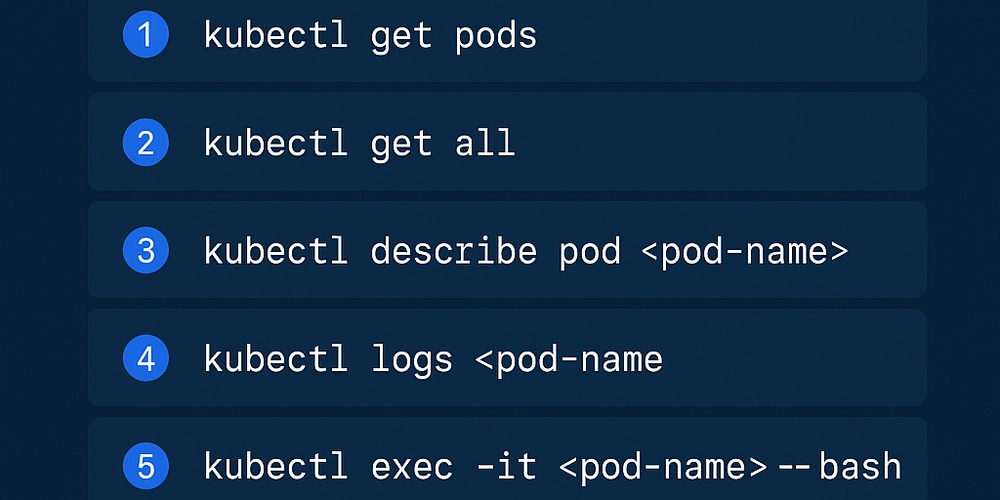Mastering Blob on the Web: A Practical Guide for Handling Files and Binary Data
Working with Blob in Web Development As part of my internship, I recently started working with Blob in web development — and I was amazed at how powerful it is! This article is a hands-on guide to understanding and using Blob on the client side, covering everything from the basics to real-world use cases and performance tips. 1. What Is a Blob? A Blob (Binary Large Object) is a data type used to represent binary data, such as files, images, or videos, on the client side — especially in JavaScript. It allows you to work with raw data flexibly and efficiently. Here's a simple example of creating a Blob: const data = new Uint8Array([72, 101, 108, 108, 111]); // Binary for "Hello" const blob = new Blob([data], { type: 'text/plain' }); 2. Common Use Cases for Blob a. File Uploads and Downloads Blob is essential when handling file uploads in the browser. You can capture files from an element like this: const fileInput = document.querySelector('input[type="file"]'); fileInput.addEventListener('change', (event) => { const file = event.target.files[0]; console.log(file); // 'file' is already a Blob }); Blob also enables creating downloadable files on the client side: const text = "Hello, world!"; const blob = new Blob([text], { type: 'text/plain' }); const url = URL.createObjectURL(blob); const link = document.createElement('a'); link.href = url; link.download = 'hello.txt'; link.click(); URL.revokeObjectURL(url); // Clean up when done b. Image and Video Previews Want to preview an uploaded image or video? Use URL.createObjectURL() to turn a Blob into a temporary URL and assign it to an or tag: const fileInput = document.querySelector('input[type="file"]'); const preview = document.querySelector('#preview'); fileInput.addEventListener('change', (event) => { const file = event.target.files[0]; const url = URL.createObjectURL(file); preview.src = url; // Optional cleanup after use: preview.onload = () => URL.revokeObjectURL(url); }); c. Web Workers and Dynamic Scripts Blob can even be used to create dynamic scripts for Web Workers, which let you run heavy tasks without blocking the main UI thread: const blob = new Blob([` onmessage = function(e) { postMessage('Received: ' + e.data); } `], { type: 'application/javascript' }); const worker = new Worker(URL.createObjectURL(blob)); worker.postMessage('Hello, Worker!'); worker.onmessage = function(e) { console.log(e.data); }; 3. Optimizing Performance When working with large datasets, it's important to manage performance and memory carefully. a. Manage Memory Blob URLs consume memory, so always clean them up when no longer needed: const url = URL.createObjectURL(blob); // Use the URL... URL.revokeObjectURL(url); // Free up memory b. Use Streams for Large Data For very large files, consider breaking data into chunks or using streaming APIs like ReadableStream and WritableStream to avoid memory overload. 4. Keep Security in Mind While Blob is powerful, it also comes with security responsibilities: Always validate and sanitize uploaded files to prevent malware risks. Implement a Content Security Policy (CSP) to reduce XSS risks. For example: Content-Security-Policy: script-src 'self'; object-src 'none'; Final Thoughts Blob opens up a world of possibilities for handling files and binary data in web applications. Whether you're implementing file uploads, downloads, media previews, or background workers, Blob can be your go-to tool. Let's keep pushing the boundaries and build awesome apps with Blob! References MDN Web Docs: Blob Zenn: Working with Blob

Working with Blob in Web Development
As part of my internship, I recently started working with Blob in web development — and I was amazed at how powerful it is! This article is a hands-on guide to understanding and using Blob on the client side, covering everything from the basics to real-world use cases and performance tips.
1. What Is a Blob?
A Blob (Binary Large Object) is a data type used to represent binary data, such as files, images, or videos, on the client side — especially in JavaScript. It allows you to work with raw data flexibly and efficiently.
Here's a simple example of creating a Blob:
const data = new Uint8Array([72, 101, 108, 108, 111]); // Binary for "Hello"
const blob = new Blob([data], { type: 'text/plain' });
2. Common Use Cases for Blob
a. File Uploads and Downloads
Blob is essential when handling file uploads in the browser. You can capture files from an element like this:
const fileInput = document.querySelector('input[type="file"]');
fileInput.addEventListener('change', (event) => {
const file = event.target.files[0];
console.log(file); // 'file' is already a Blob
});
Blob also enables creating downloadable files on the client side:
const text = "Hello, world!";
const blob = new Blob([text], { type: 'text/plain' });
const url = URL.createObjectURL(blob);
const link = document.createElement('a');
link.href = url;
link.download = 'hello.txt';
link.click();
URL.revokeObjectURL(url); // Clean up when done
b. Image and Video Previews
Want to preview an uploaded image or video? Use URL.createObjectURL() to turn a Blob into a temporary URL and assign it to an tag:
const fileInput = document.querySelector('input[type="file"]');
const preview = document.querySelector('#preview');
fileInput.addEventListener('change', (event) => {
const file = event.target.files[0];
const url = URL.createObjectURL(file);
preview.src = url;
// Optional cleanup after use:
preview.onload = () => URL.revokeObjectURL(url);
});
c. Web Workers and Dynamic Scripts
Blob can even be used to create dynamic scripts for Web Workers, which let you run heavy tasks without blocking the main UI thread:
const blob = new Blob([`
onmessage = function(e) {
postMessage('Received: ' + e.data);
}
`], { type: 'application/javascript' });
const worker = new Worker(URL.createObjectURL(blob));
worker.postMessage('Hello, Worker!');
worker.onmessage = function(e) {
console.log(e.data);
};
3. Optimizing Performance
When working with large datasets, it's important to manage performance and memory carefully.
a. Manage Memory
Blob URLs consume memory, so always clean them up when no longer needed:
const url = URL.createObjectURL(blob);
// Use the URL...
URL.revokeObjectURL(url); // Free up memory
b. Use Streams for Large Data
For very large files, consider breaking data into chunks or using streaming APIs like ReadableStream and WritableStream to avoid memory overload.
4. Keep Security in Mind
While Blob is powerful, it also comes with security responsibilities:
- Always validate and sanitize uploaded files to prevent malware risks.
- Implement a Content Security Policy (CSP) to reduce XSS risks. For example:
Content-Security-Policy: script-src 'self'; object-src 'none';
Final Thoughts
Blob opens up a world of possibilities for handling files and binary data in web applications. Whether you're implementing file uploads, downloads, media previews, or background workers, Blob can be your go-to tool.
Let's keep pushing the boundaries and build awesome apps with Blob!
References
- MDN Web Docs: Blob
- Zenn: Working with Blob







































































































































































![[The AI Show Episode 145]: OpenAI Releases o3 and o4-mini, AI Is Causing “Quiet Layoffs,” Executive Order on Youth AI Education & GPT-4o’s Controversial Update](https://www.marketingaiinstitute.com/hubfs/ep%20145%20cover.png)

































































































































![From Art School Drop-out to Microsoft Engineer with Shashi Lo [Podcast #170]](https://cdn.hashnode.com/res/hashnode/image/upload/v1746203291209/439bf16b-c820-4fe8-b69e-94d80533b2df.png?#)








































































































(1).jpg?#)































_Inge_Johnsson-Alamy.jpg?width=1280&auto=webp&quality=80&disable=upscale#)













































































































![Apple Developing AI 'Vibe-Coding' Assistant for Xcode With Anthropic [Report]](https://www.iclarified.com/images/news/97200/97200/97200-640.jpg)
![Apple's New Ads Spotlight Apple Watch for Kids [Video]](https://www.iclarified.com/images/news/97197/97197/97197-640.jpg)







































































![[Weekly funding roundup April 26-May 2] VC inflow continues to remain downcast](https://images.yourstory.com/cs/2/220356402d6d11e9aa979329348d4c3e/WeeklyFundingRoundupNewLogo1-1739546168054.jpg)



























